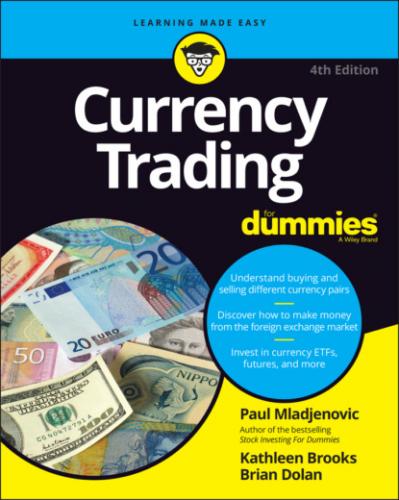Finding your trading style
Before you can develop a trading plan, settling on a trading style is essential. Different trading approaches generally call for variations on trading plans, though there are plenty of overarching trading rules that apply to all styles. (See the Appendix for more on trading strategies.)
Trade time frame: How long will you hold a position? Are you looking at short-term trade opportunities (day trading), trying to capture more-significant shifts in currency prices over days or weeks, or something in between?
Currency pair selection: Are you interested in trading in all the different currency pairs, or are you inclined to specialize in only one or two?
Trade rationale: Are you fundamentally or technically inclined? Are you considering creating a systematic trading model? What strategy will you follow? Are you a trend follower or a breakout trader?
Risk appetite: How much are you prepared to risk and what are your return expectations?
At the end of the day, though, zeroing in on a trading style that you feel comfortable with and that you can pursue on a consistent basis helps. Your own individual circumstances (including work, family, free time, finances, temperament, and discipline) will be the key variables, and you’re the only one who knows what they are.
Planning the trade
Whatever trading style you ultimately choose to follow, you won’t get very far if you don’t establish a concrete trading plan and stick to it. Trading plans are what keep small bad trades from becoming big bad trades, and they can turn small winners into bigger winners. More than anything, though, they’re your road map, helping you to navigate the market after the adrenaline and emotions start pumping, no matter what the market throws your way.
The starting point of any trading plan is to identify a trading opportunity. No one is going to give you a call or shoot you an email telling you what and when to trade. You have to devote the effort and gray cells to spotting viable trading opportunities yourself.
Throughout this book, we offer our own observations on how the forex market behaves in various market conditions. We think there are plenty of kernels for spotting trade opportunities in those observations. Above all, be patient and wait for the market to show its hand, which it always does, one way or the other.
Executing the Trading Plan from Start to Finish
The start of any trade comes when you step into the market and open up a position. How you enter your position, how you execute the first step of your trading plan, can be as important as the trade opportunity itself (see Chapter 10). After all, if you never enter the position, the trade opportunity will never be exploited. And probably nothing is more frustrating as a trader than having pinpointed a trade opportunity, having it go the way you expected, but having nothing to show for it because you never put the trade on.
The effort and resources you invest in researching, monitoring, and analyzing the market come to a concrete result when you open a trade. This process is made easier by formulating a personal trading system, with trigger points and setups to help you enter the trade. Placing the trade is just the beginning.
Just because you have a trading plan doesn’t mean the market is necessarily going to play ball. You need to be actively engaged in managing your position to make the most of it if it’s a winner and to minimize the damage if the market isn’t going in your favor.
You need to stay on your toes, and keep thinking about and monitoring the market while your trade is still active. The market will always be moving, sometimes faster than at other times, and new information will still be coming into the market. In Chapter 11, we look at several different ways you can monitor the market while your trade is open, as well as how and when you should adjust your trade strategy depending on events and time.
Exiting each trade is the culmination of the entire process, and you’re either going to be pleased with a profit or disappointed with a loss. Every trade ends in either a profit or a loss (unless you get out at the entry price); it’s just the way the market works. While your trade is still active, however, you’re still in control and you can choose to exit the trade at any time.
Even after you’ve exited the position, your work is not done. If you’re serious about currency trading as an enterprise, you need to review your prior trade for what it tells you about your overall trading style and trade execution. Keeping a record of your trading history is how you stay focused, learn from your mistakes, and avoid lapses in discipline that could hurt you on your next trade. Only then is it time to move on to the next trading opportunity. (And don’t forget the last step regarding your trades: the potential tax bite. Find out more in Chapter 12.)
Chapter 2
What Is the Forex Market?
IN THIS CHAPTER
